

Have you ever travelled abroad and felt like an instant millionaire? You hand over your 50 AED note and get back a huge stack of local banknotes. At first, it’s exciting, until you realise those notes won’t buy as much as you thought.
That’s how currency values work. It isn’t about how much you have, but how much you can buy with that. Weaker currencies have much lower purchasing power when compared to the stronger ones.
In this blog, we’ll explore the 10 weakest currencies in the world right now and discover the reasons behind their low values.
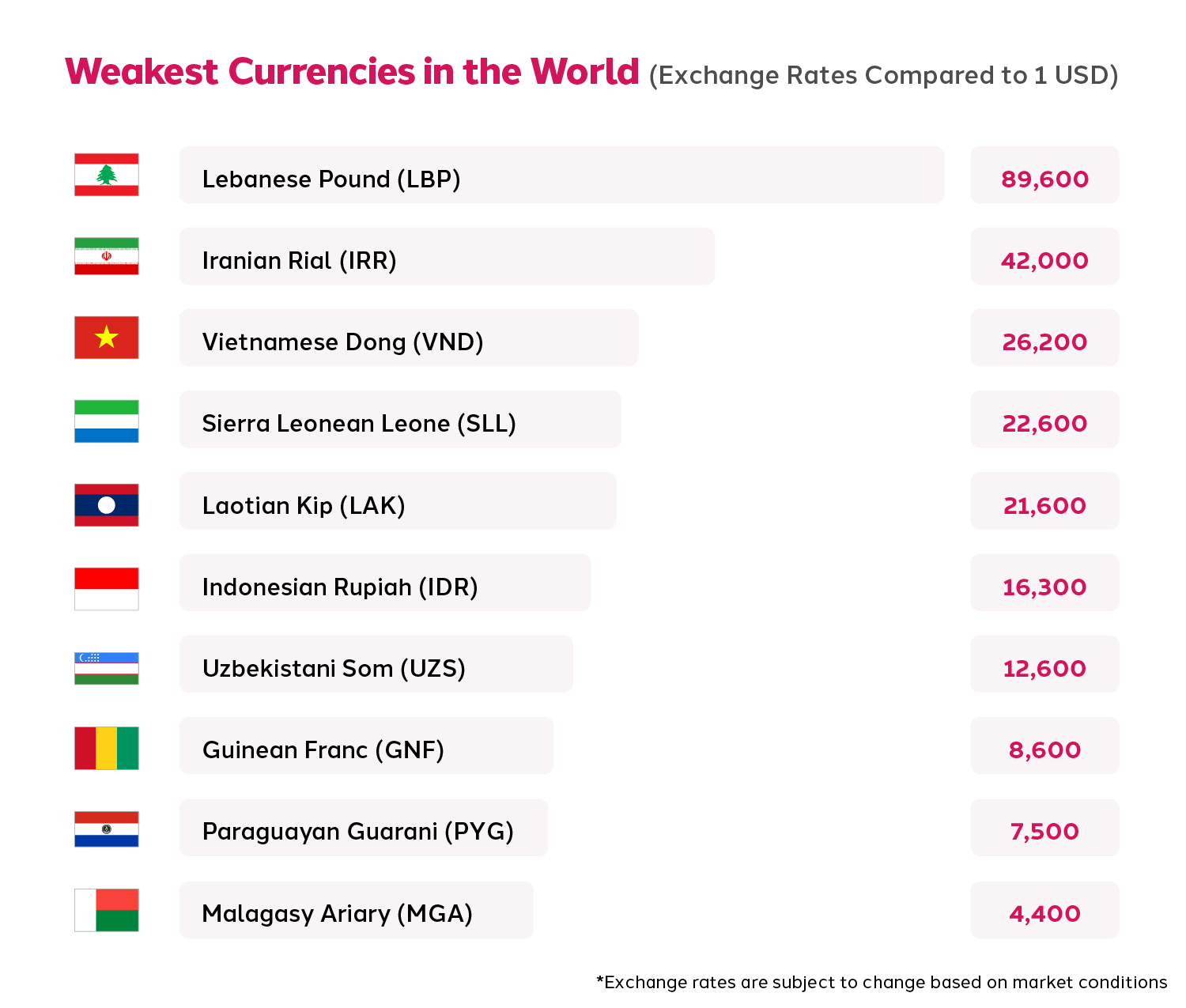
Before we explore the weakest currencies, take a moment to check the live exchange rates and stay updated.
Now, let’s have a look at the world’s weakest currencies by comparing them against the US dollar.
Lebanese Pound (LBP)
Exchange Rate: 1 USD ≈ 89,600 LBP
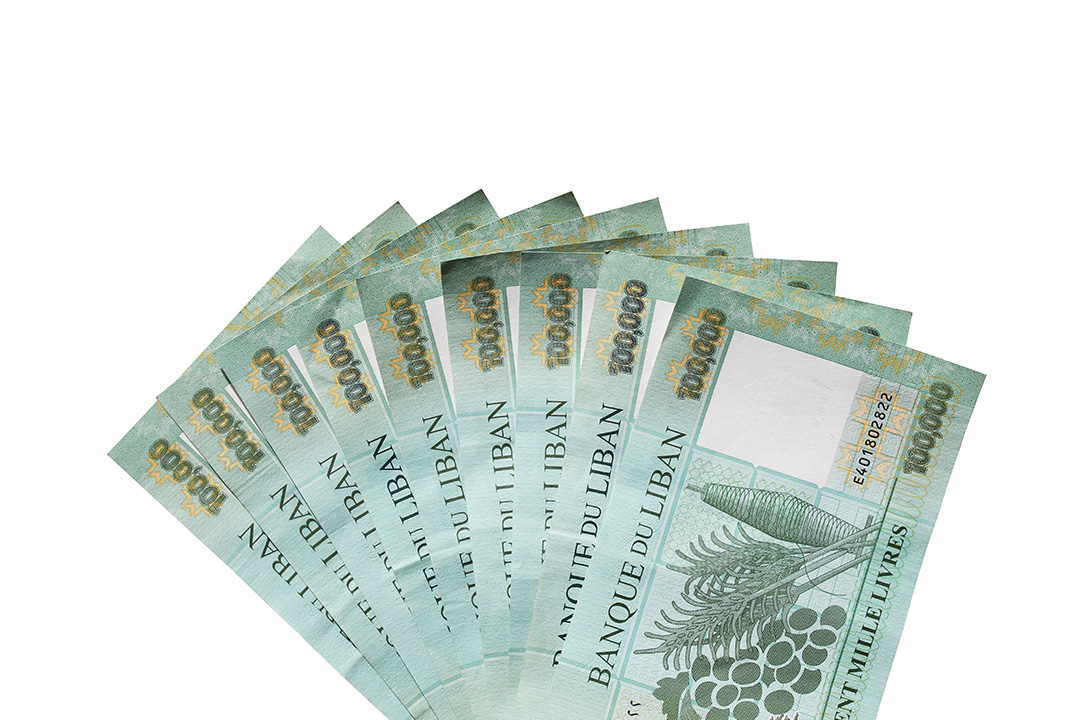
The Lebanese Pound (LBP) or lira, is the weakest currency in the world. The currency lost its value after the banking sector crisis in 2019. Once pegged at 1,500 LBP per USD from December 1997 through January 2023, it lost over 98% of its value following the crisis. The Lebanese economy remains trapped in one of the worst financial crises, which was even worsened by hyperinflation, capital controls, and loss of foreign reserves.
Have a look at the strongest currencies in the world!
Iranian Rial (IRR)
Exchange Rate: 1 USD ≈ 42,000 IRR
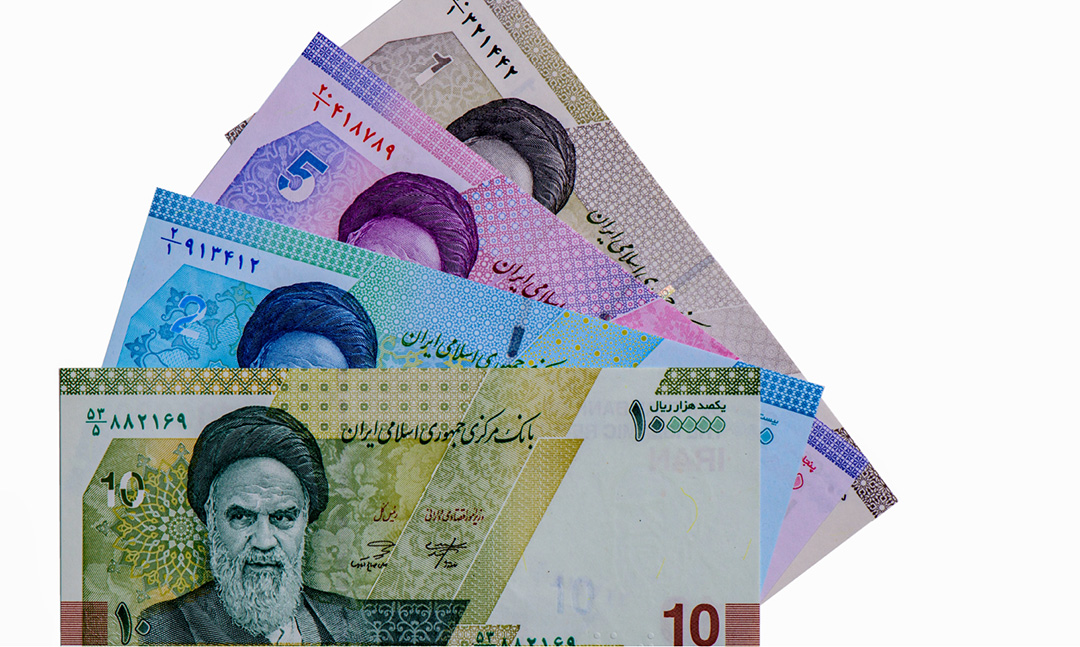
Iranian Rial (IRR), the official currency of the Islamic Republic of Iran, first introduced in 1798 as a coin, is the second-lowest valued currency in the world. The currency started losing its value after the 1979 Islamic Revolution, which worsened during the Iran-Iraq war, and further declined after multiple international sanctions over its nuclear programme.
Vietnamese Dong (VND)
Exchange Rate: 1 USD ≈ 26,200 VND
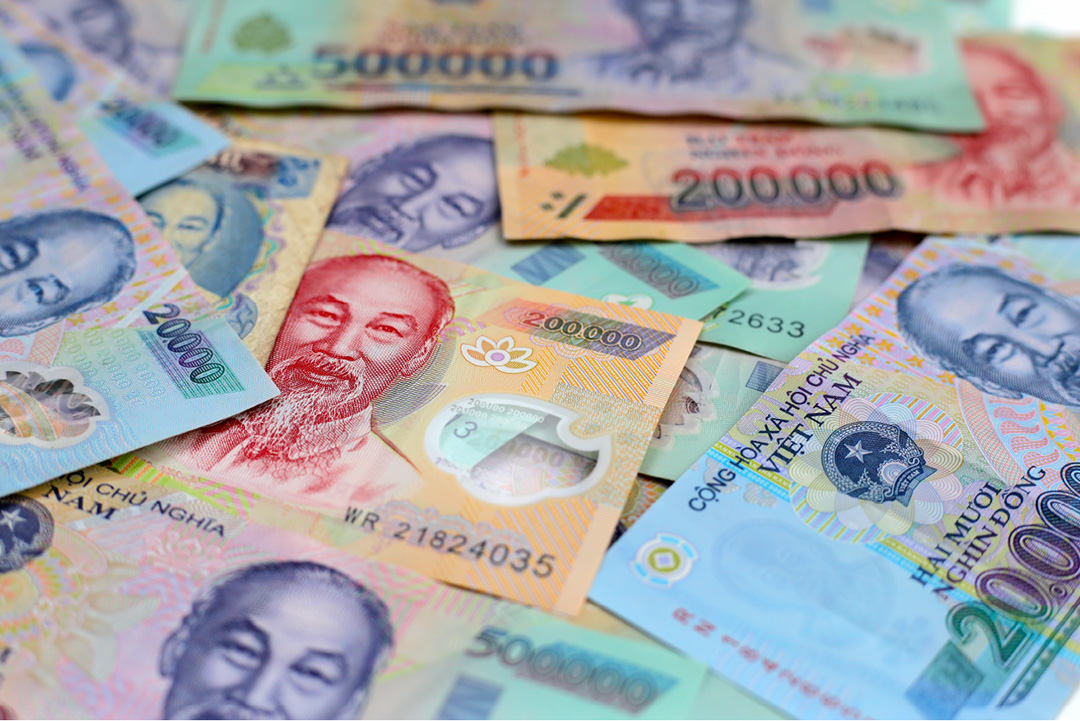
Vietnamese Dong (VND), the official currency of Vietnam, is the third-lowest valued currency in the world. The currency, in use since 3 May 1978, was deliberately kept undervalued by the government to improve export competitiveness. Its low value raises import costs and at the same time boosts demand for Vietnam’s exports, which supports jobs and economic growth. The factors behind VND’s low value include a controlled exchange rate, large money supply, and inflation.
Sierra Leonean Leone (SLL)
Exchange Rate: 1 USD ≈ 22,600 SLL
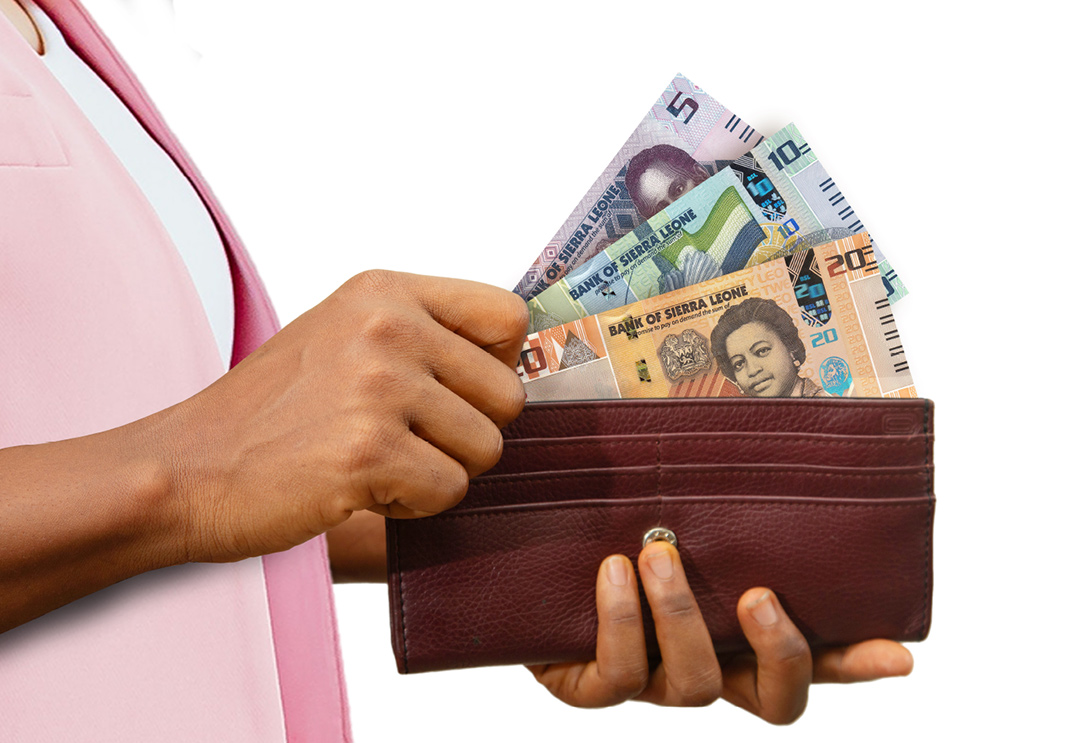
Sierra Leonean Leone (SLL), the currency of Sierra Leone, is one of the weakest currencies in the world. Leone which was introduced on 4 August 1964, was worth more than the U.S. dollar until the 1980s.
But after inflation which continued for years, the value of leone started falling rapidly and now it reached a stage where over 22,000 leones are required to buy 1 U.S. dollar. Dependence on mineral exports, high inflation, and governance challenges are the reasons for the SLL’s low value.
Also Read: What is WPS in UAE?
Laotian Kip (LAK)
Exchange Rate: 1 USD ≈ 21,600 LAK
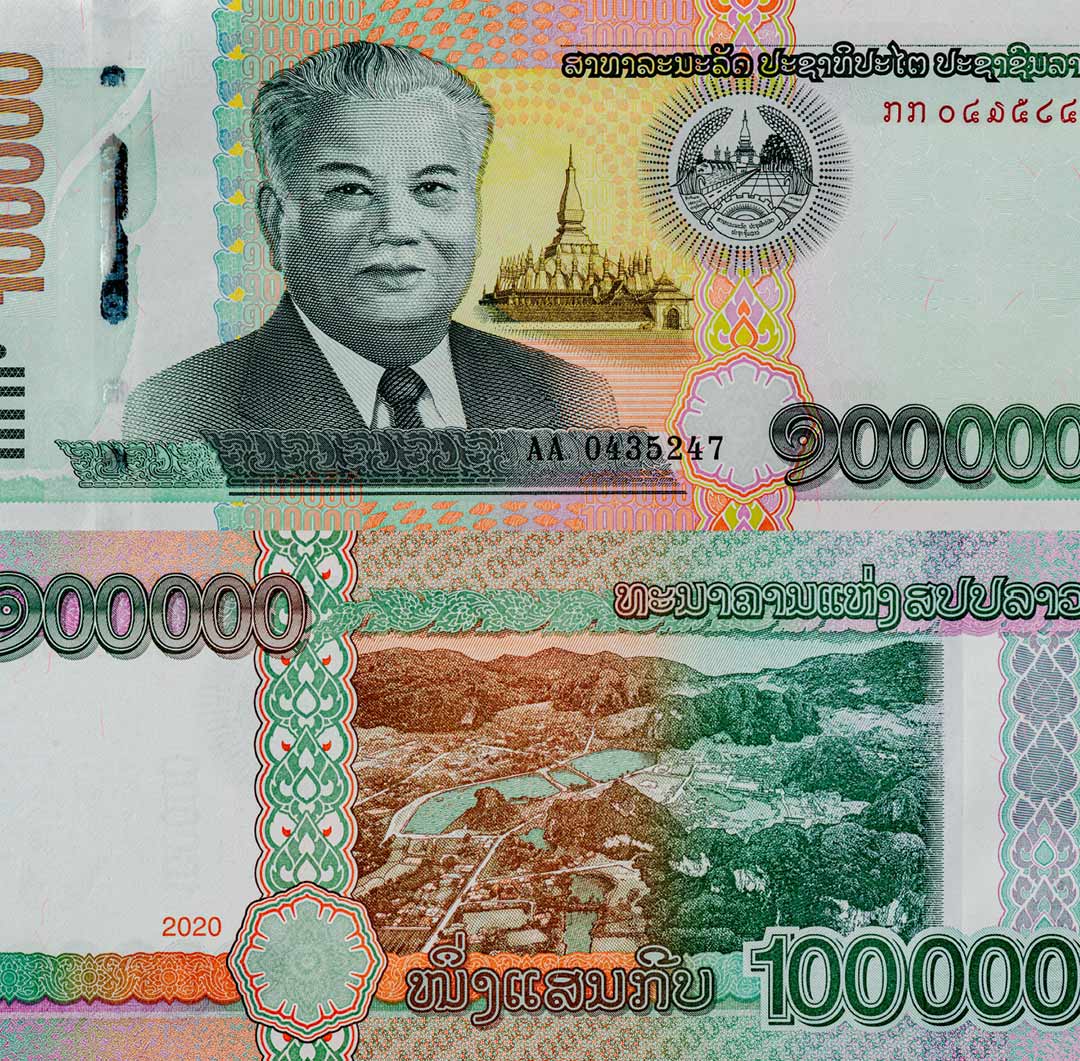
Laotian Kip (LAK), also known simply as the kip, the currency of Laos is another weakest currency in the world. In Laos, industrial diversification is limited, while the major dependence is on hydropower, agriculture, and mining. The major reasons for the currency’s weakness are rising foreign debt, inflation, and limited export base.
Higher import costs due to inflation increase the prices of goods and services. For Laotian families who receive remittances from abroad, this can mean more local currency in hand but reduced purchasing power.
Indonesian Rupiah (IDR)
Exchange Rate: 1 USD ≈ 16,300 IDR
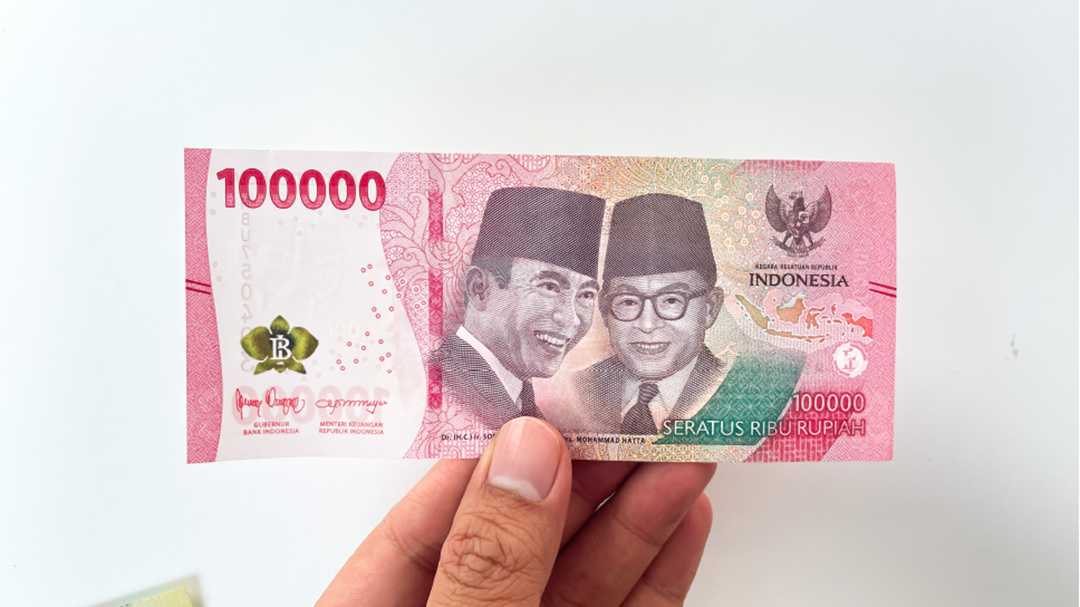
Indonesian Rupiah (IDR), the official currency of Indonesia, is another weakest currency in the world and was introduced in 1946. Although being the largest economy in Southeast Asia, the currency is known to have the lowest value due to external shocks, capital outflows, and import costs. While IDR’s low value benefits exports and tourism, it increases costs for imports and foreign travel for Indonesians, keeping inflation risks in play.
Uzbekistani Som (UZS)
Exchange Rate: 1 USD ≈ 12,600 UZS
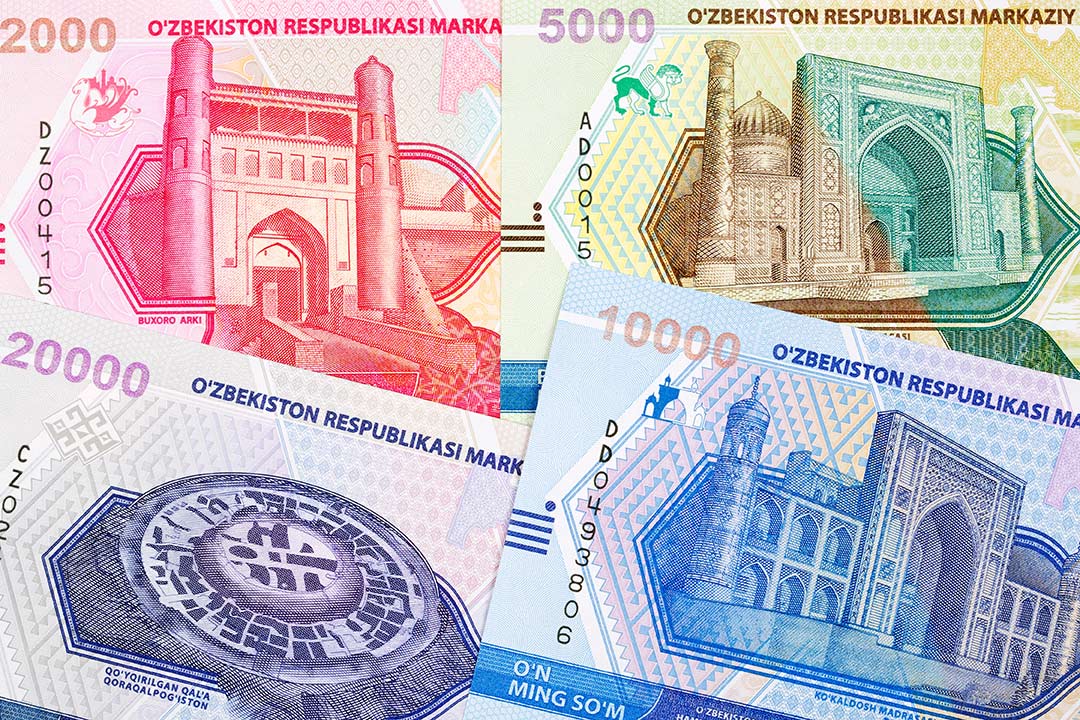
Uzbekistani Som (UZS), the official currency of Uzbekistan, is next in the list of the weakest currencies in the world. When it was introduced on 1 July 1994, 1 USD was equal to 25 UZS, but now the value has dropped to approximately 12,625 UZS. Limited industrial diversification, high inflation, and low foreign investment are the major reasons the currency remains weak.
Guinean Franc (GNF)
Exchange Rate: 1 USD ≈ 8,600 GNF
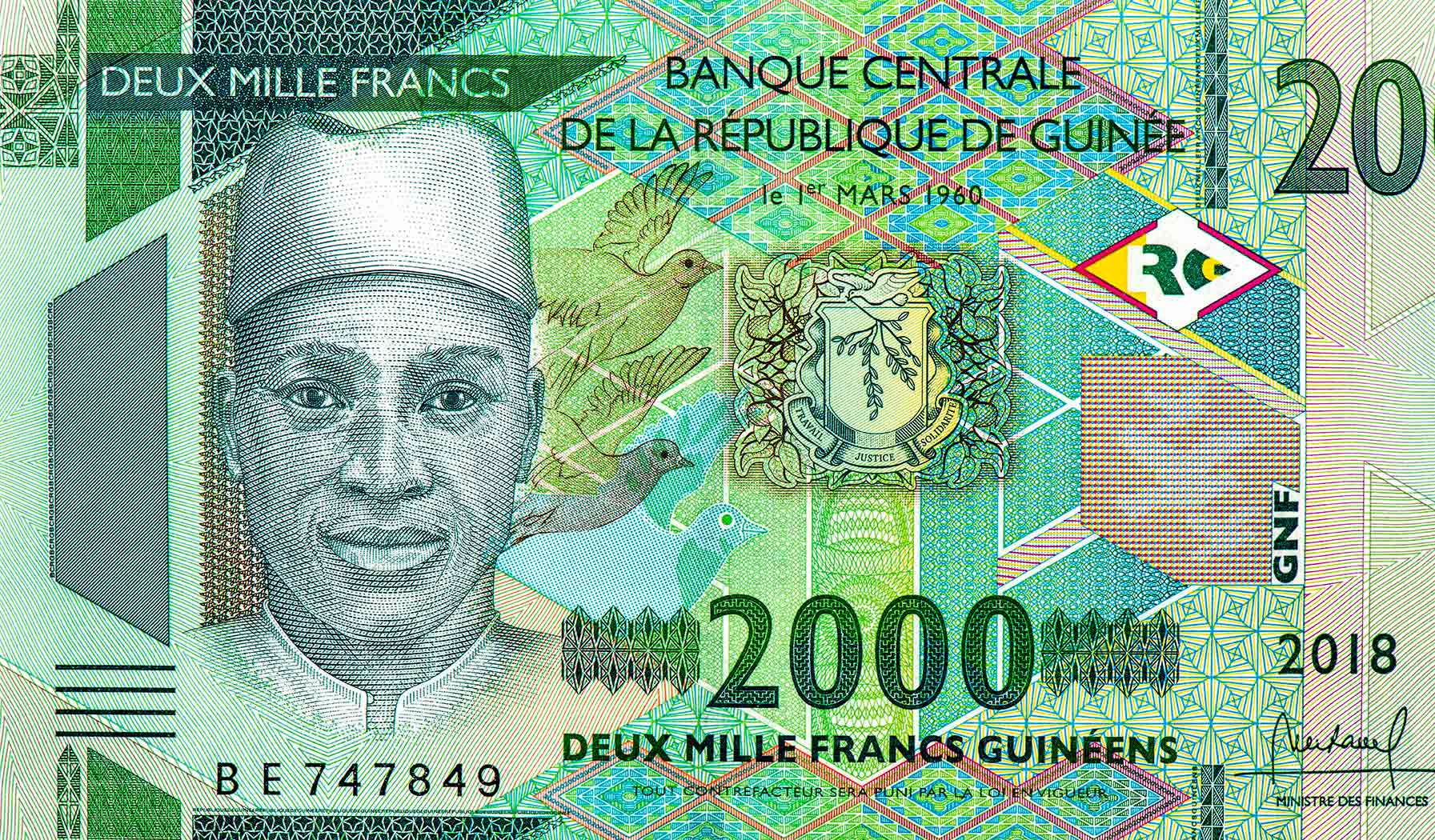
Guinean Franc (GNF), the official currency of Guinea, is next in the list. Although Guinea is known for its abundance of natural resources such as gold, bauxite, and diamonds, the currency remains weak. Reliance on exports for raw materials, high inflation, and a limited manufacturing sector weaken the currency’s value. Remittances from abroad are essential for supporting household incomes.
Paraguayan Guarani (PYG)
Exchange Rate: 1 USD ≈ 7,500 PYG
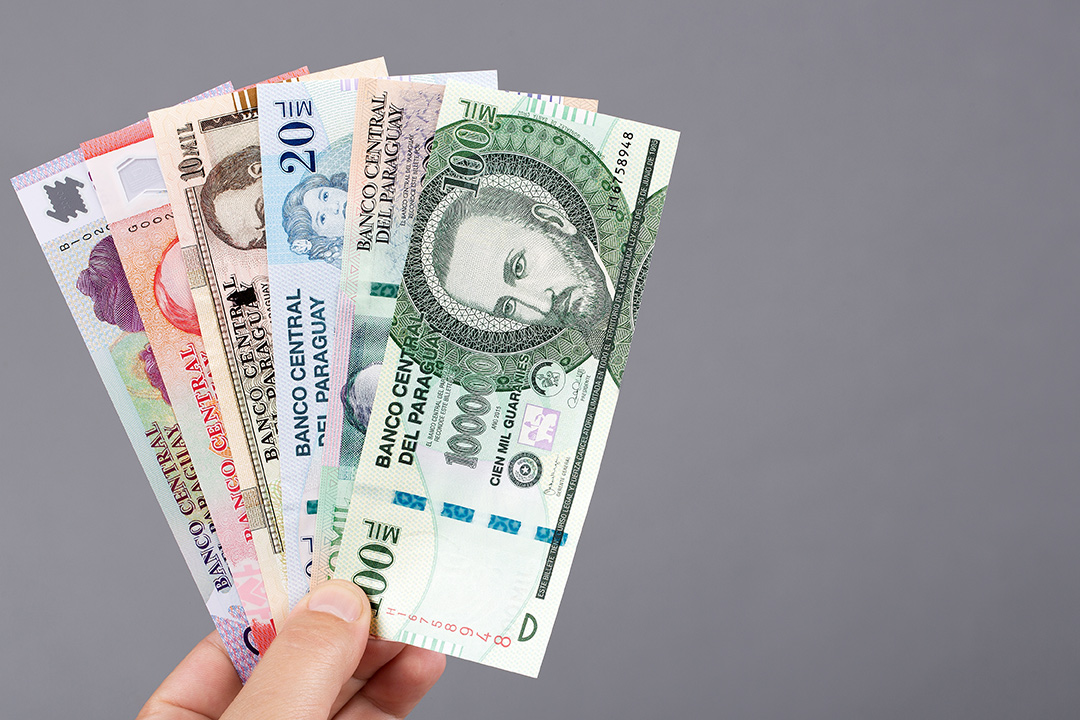
Paraguayan Guarani (PYG), the official currency of Paraguay, is another lowest-valued currency in the world. PYG’s low value reflects the country’s small, agriculture-dependent economy. Although its low value is useful in exports, it increases the costs of imported goods like fuel, machinery, and electronics.
The major reasons for the currency’s weakness are limited industrialisation, external vulnerabilities such as droughts or falling crop prices, and a limited presence in global trade.
Malagasy Ariary (MGA)
Exchange Rate: 1 USD ≈ 4,400 MGA
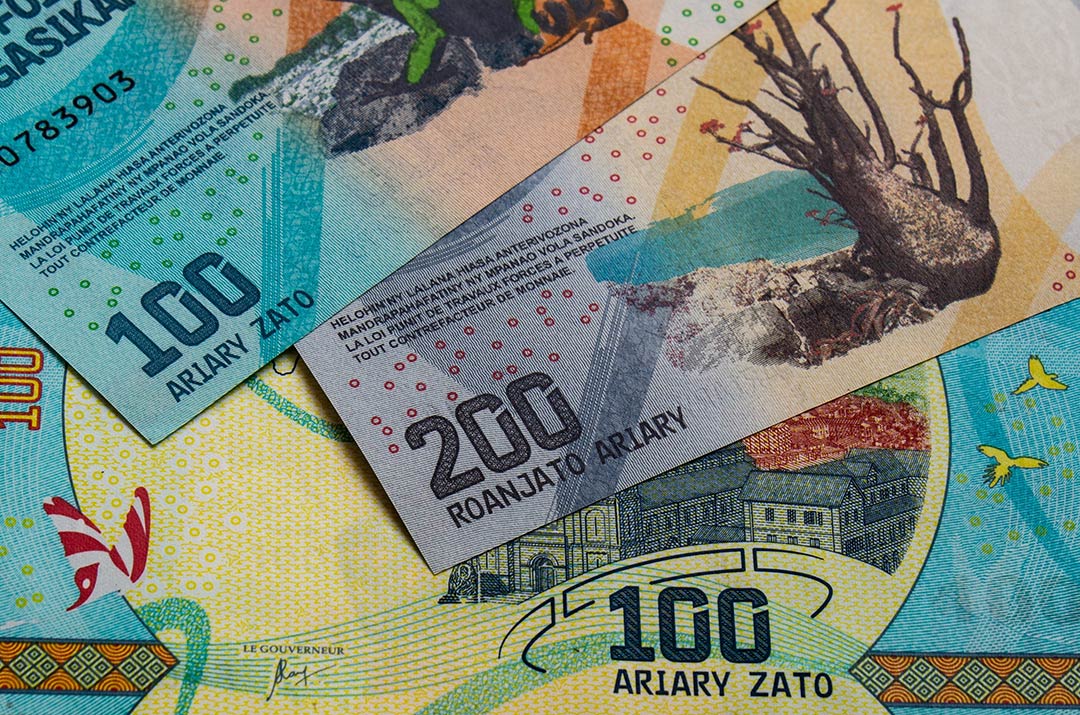
Malagasy Ariary, the official currency of Madagascar, is the tenth in the list of weakest currencies in the world. It reflects the island country’s political instability, poverty, and underdeveloped infrastructure. The country’s economy relies heavily on agricultural exports like vanilla, coffee, and cloves. Climate change and global price fluctuations can adversely affect the country’s economy.
Disclaimer: All exchange rates are subject to change at any time based on market conditions.
Frequently Asked Questions
Which is the tenth weakest currency in the world?
The tenth weakest currency in the world, in terms of exchange rate against the USD, is the Malagasy Ariary (MGA).
What is the world’s lowest currency in 2025?
The world’s lowest-valued currency in 2025 is the Lebanese Pound (LBP), trading at roughly 89,600 LBP per USD, making it the weakest currency in terms of exchange rate value.
Which is the No.1 currency?
Kuwaiti Dinar (KWD) is known as the No.1 currency and the strongest currency in the world.
Why do some currencies have low value?
Common causes of low currency value are high inflation, economic & political instability, sanctions, and limited economic diversification.
Is a weak currency always bad?
No. Although a weak currency raises import costs and reduces purchasing power, it can make exports more competitive internationally, which can boost local industries and tourism.
How does a weak currency affect money remittances?
Those who rely on money remittances from abroad may get more local currency, but inflation in their country often reduces its real value.
Where can I check live exchange rates?
You can check live exchange rates using the LuLu Money App or on the currency converter page to get updated and accurate rates before sending money abroad.
Popular BLOG
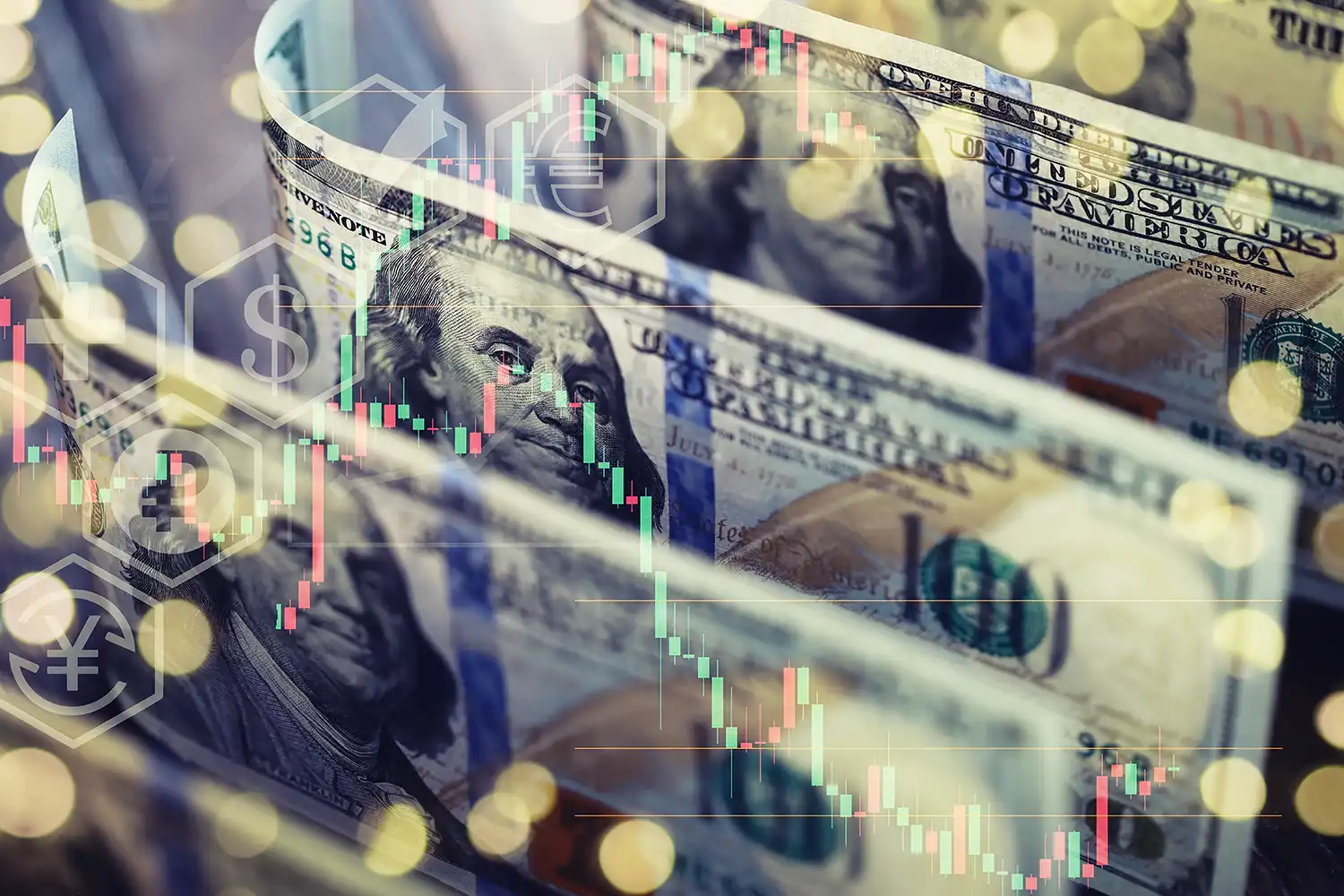
November 12, 2025
Why Does the US Dollar Hold the Key to Global Exchange Rates?

October 31, 2025
Best Time to Send Money From UAE to India

October 10, 2025
How to Identify Fake Money Transfer Scams

September 25, 2025
The Ripple Effect: When Everyday Choices Echo Far & Wide
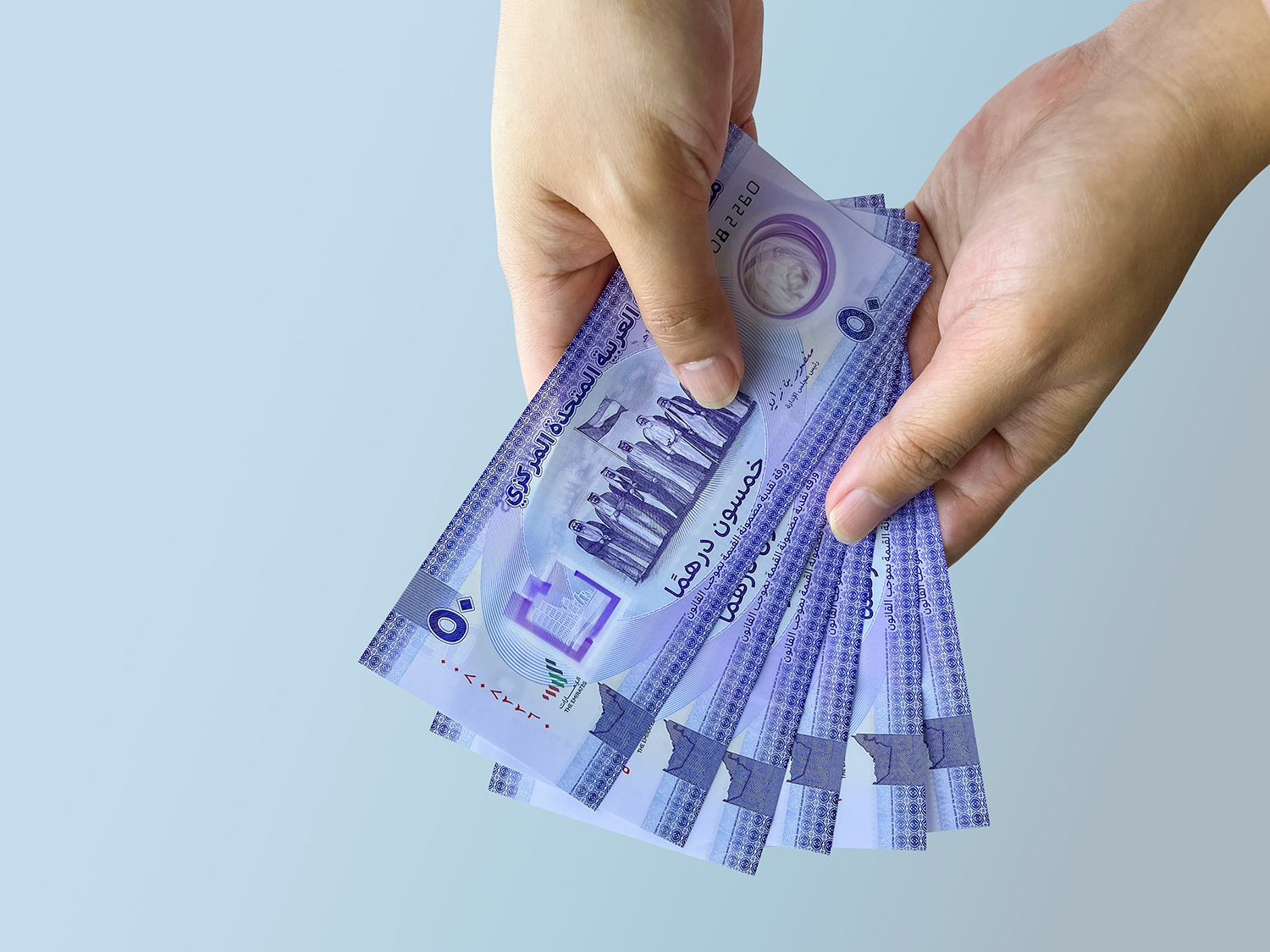
October 6, 2025
WPS in UAE: Everything Employers and Employees Should Know

September 19, 2025
How AI Will Impact Money Transfer in the Future
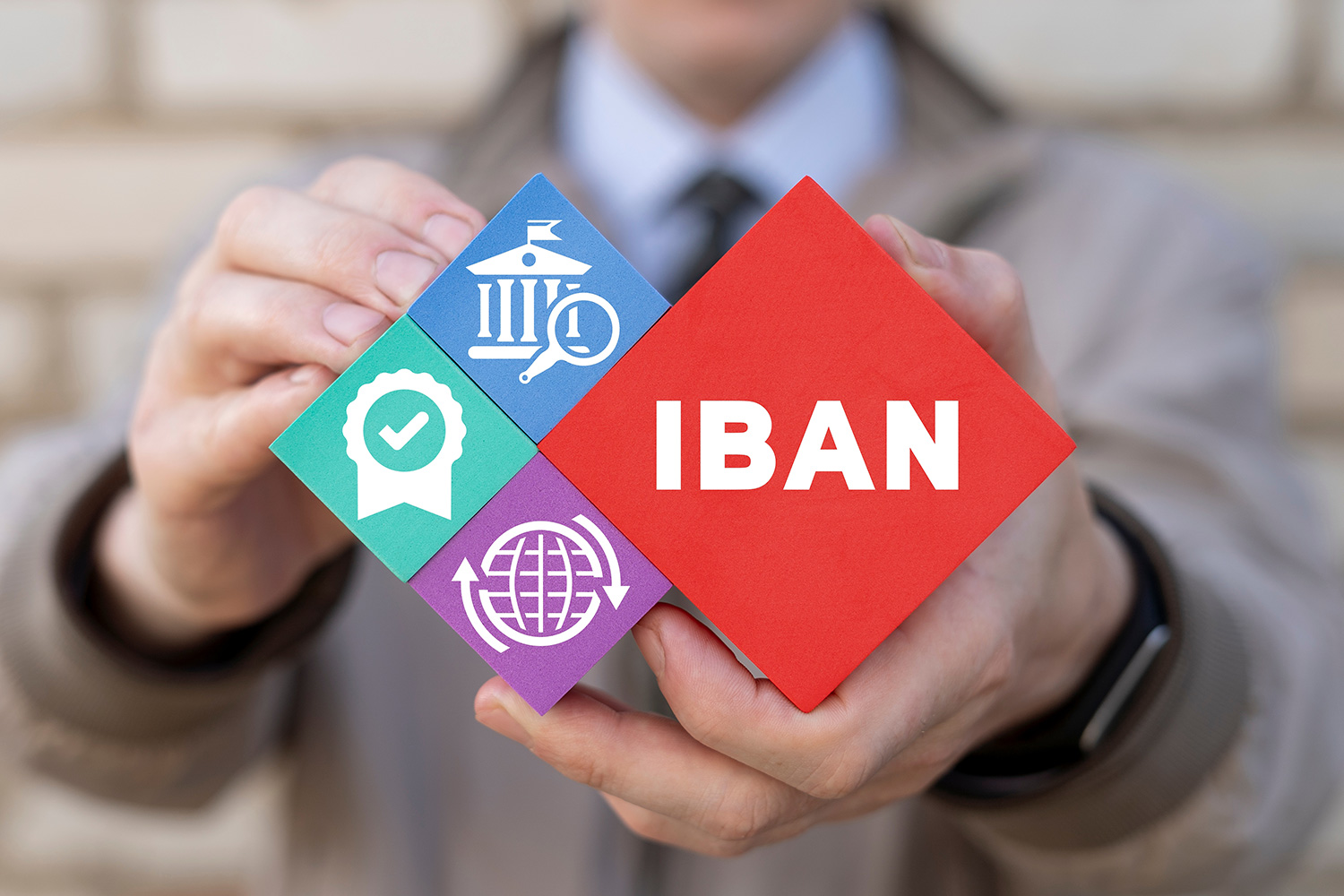
September 10, 2025
What is IBAN Number? How to Find & Use IBAN

September 2, 2025
What Is a SWIFT Code and Why Do You Need It?
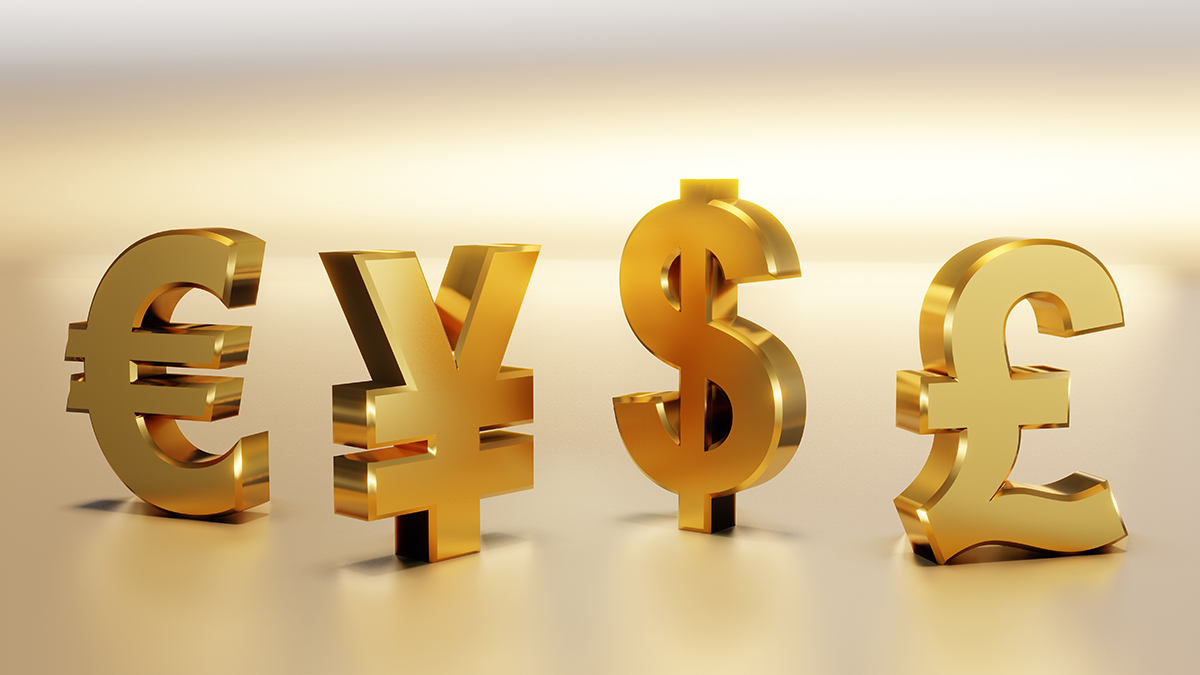
August 25, 2025
World Currency Symbols, Explore All Country Currency Symbols

August 7, 2025

